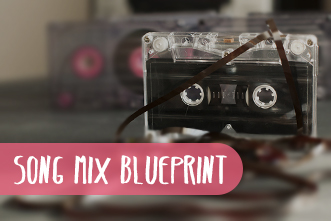[Editor’s note: This article originally appeared Behind The Mixer. Click here to head over Behing the Mixer to check out this article and plenty of other great resources.]
Have you looked at the set list for next weekend? Do you have any idea what songs you’ll be mixing? The standards, right? A worship team worth their weight in salt (that’s a lot of salt) will be rotating in new songs now and then. The musicians will practice their respective parts, the worship leader will have an arrangement selected, and as a team they will practice the song until it’s good enough for playing for the congregation. You are the final musician on that team, mixing all of their sounds together into a song lifted up in worship. What have you done to learn that song?
Today’s article lists out the steps I take whenever I see a new song on the set list. I’ve mentioned before the importance of getting a copy of the song which the band will be using as their blueprint. This list goes way beyond that. It’s a way of creating your own mix blueprint. It’s a way of ensuring you are just as prepared as the musicians when you mix the song for the first time.
1. Listen to the song.
Get a copy of the song that the band is modeling the style and arrangement of. The worship leader will likely tell you something like, “We are doing the “10,000 Reasons” song by Matt Redman in the same way he has it on the 10k Reasons album.” You can jump onto Spotify or YouTube and look up the same version … if you don’t already happen to have it in your personal music collection.
Listen a few times to get the general OVERALL song feel. Is it slow or fast? Simple or complex? Does it have a big sound or a ‘small set’ feel? Get the big picture.
2. Create a song breakout order.
From the musical side of things, a song is arranged into several common areas. You might think of this as the verses and the chorus. For your blueprint, start with the following six areas. This list can be expanded, as I’ll soon discuss, but for now this is the best place to start.
- Intro: Song intros can start in many different ways. It can be full on instruments, a slow drum beat, a rhythm guitar or even a scripture reading over the instruments.
- Verse: The verses of a song tend to have the same arrangement, but can have a different number of instruments as a means of providing song movement.
- Chorus: Choruses, like verses, can have slightly altered arrangements. A common arrangement change is the last chorus being sung without any instruments.
- Bridge: Not all songs have a bridge. The bridge is often used to contrast with the verse/chorus and prepare for the return of the verse/chorus. It can have a time change and even a key change.
- Instrumental: Instrumental sections of a song can be a few measures or they can be a long passages, depending on the arrangement.
- Outro: The outro can have the same variety as the intro, or you might have a lack of an outro. For example, the song immediately ends after the last chorus.
3. Listen and fill out the breakout basics.
You know the general feel and flow of the song, now you need to sketch out the basic outline. You will need to adjust your breakout order if you have verse and chorus differences. For example, the second verse might have a different arrangement than the first verse. If this is the case, modify your notes such as:
- Verse 1: Drums come in with only the snare and hi-hat.
- Verse 2: Full on instruments.
Consider this example of breakout notes:
- Intro: Solo piano with singer reading a passage of scripture.
- Verse 1: Drums and bass added.
- Verse 2+: All instruments with only lead singer.
- Chorus: Backing vocalists used only in the chorus.
- Bridge: N/A
- Instrumental: Piano over other instruments.
- Outro: Ends with acoustic guitar and piano.












